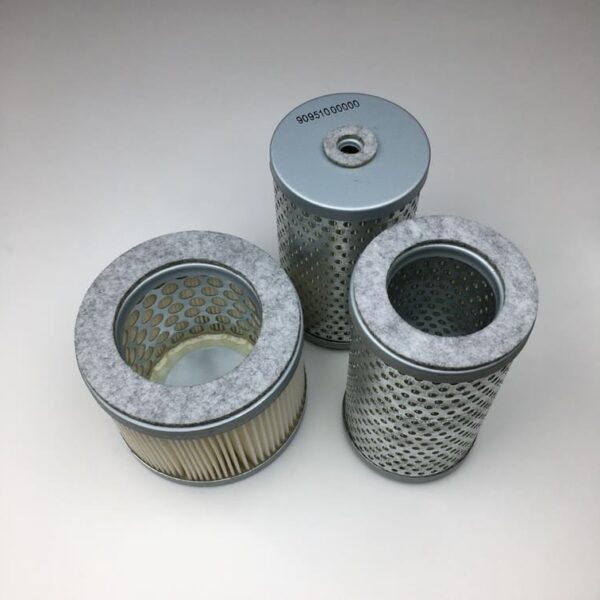A vacuum pump in a car is a crucial component that helps manage various engine systems by creating a vacuum to support essential functions. If you own a vehicle, particularly one with a diesel engine, you might have heard of a vacuum pump but perhaps not fully understood its role. This comprehensive guide aims to shed light on what a vacuum pump is in a car, its functions, and why it is important for the overall performance of your engine.
Introduction to Vacuum Pumps in Cars
A vacuum pump is essentially a mechanical device used to generate vacuum pressure, which in turn powers several components in a vehicle. It is particularly significant in cars that rely on vacuum-assisted components for optimal performance. Some examples of these components include power brakes, Exhaust Gas Recirculation (EGR) systems, and other auxiliary systems.
In a car, the vacuum pump ensures that there is enough vacuum pressure available to run these components efficiently. Modern engines, especially those that are turbocharged or have low manifold vacuum, rely on an external vacuum pump to generate the necessary vacuum for the proper functioning of the vehicle.
Quick Overview of Car Vacuum Pump Functions
| Component | Role of the Vacuum Pump |
|---|---|
| Brake Booster | Assists in providing vacuum power for power brakes. |
| EGR System | Helps in controlling the recirculation of exhaust gases. |
| HVAC Control | Supports proper operation of air conditioning vents. |
“Without an efficient vacuum pump, the brake system, EGR, and HVAC control might not function at their optimal performance, posing a significant safety hazard.”
Why Do Cars Need a Vacuum Pump?
The primary reason a vacuum pump is necessary is that modern car engines don’t produce as much vacuum pressure naturally as older models. This is especially true for diesel engines and turbocharged gasoline engines. These engines have a lower vacuum generation capacity, and to ensure key systems like power brakes continue to operate properly, an auxiliary pump is used.
Key Roles of a Vacuum Pump
- Brake Booster Assistance: The brake booster relies on vacuum pressure to help you push the brake pedal more easily. This makes stopping your car less physically demanding.
- Exhaust Gas Recirculation (EGR): EGR is important for reducing harmful emissions from your engine. A vacuum pump helps regulate this by controlling the amount of exhaust gases that are recirculated back into the combustion chamber.
- HVAC and Climate Control: The Heating, Ventilation, and Air Conditioning (HVAC) system also relies on vacuum power to open and close flaps, allowing the direction of airflow to be controlled inside the cabin.
How Does It Work?
The vacuum pump works by creating negative pressure within the engine’s vacuum system. This negative pressure is harnessed by several of the components listed above. It can be mechanically driven, attached directly to the engine (typically the camshaft or timing belt), or can be powered electrically depending on the type of car.
For example, in diesel engines, the mechanical vacuum pump is often found driven by a shaft connected to the camshaft. As the camshaft turns, it drives the pump to create the vacuum required for the various car functions.
Types of Vacuum Pumps Used in Cars
There are a few types of vacuum pumps used in vehicles, depending on the make and model:
1. Mechanical Vacuum Pump
The mechanical vacuum pump is directly driven by the engine, usually off the camshaft or belt drive. It provides a continuous vacuum as the engine runs, which is particularly useful in diesel cars or other vehicles where engine-generated vacuum is insufficient.
Advantages:
- Constant vacuum generation without additional energy consumption.
- Dependable for diesel vehicles where manifold vacuum is not available.
Disadvantages:
- Increased load on the engine.
- Potential for wear and tear since it operates continuously.
2. Electric Vacuum Pump
Electric vacuum pumps are becoming more common, especially in newer vehicles with stricter emission requirements. These pumps are electrically powered and can turn on or off based on the need for vacuum pressure.
Advantages:
- More efficient since it works only when needed.
- It is less dependent on the engine load.
Disadvantages:
- Requires electrical power from the battery.
- Generally more expensive compared to mechanical versions.
Comparison Between Mechanical and Electric Vacuum Pumps
| Feature | Mechanical Pump | Electric Pump |
|---|---|---|
| Dependence on Engine | Fully dependent | Partially dependent |
| Energy Consumption | Consistent engine load | On-demand, lower consumption |
| Application | Diesel and turbocharged engines | Modern gasoline engines |
Symptoms of a Faulty Vacuum Pump
A malfunctioning vacuum pump can lead to several performance and safety issues. It is important to understand these symptoms to identify a failing pump before it causes bigger problems.
1. Hard Brake Pedal
One of the most common signs of a failing vacuum pump is a hard brake pedal. Without the right amount of vacuum pressure, the brake booster cannot function correctly, which means you need to apply more force to stop the vehicle.
2. Check Engine Light
Another common symptom is the check engine light turning on. When the vacuum system does not operate properly, it may trigger sensors within the vehicle, leading to an illuminated warning light on the dashboard.
3. Poor HVAC Performance
You may also notice poor performance of the climate control system. If the vacuum pump is failing, it might not be able to control the HVAC flaps properly, leading to temperature or air direction issues.
Note: If you experience any of these symptoms, have your vehicle inspected by a professional as soon as possible to prevent further damage.
How to Maintain Your Car’s Vacuum Pump
Proper maintenance of the vacuum pump can help extend its life and ensure the vehicle’s optimal performance. Here are some tips for maintaining your vacuum pump:
Regular Oil Changes
For mechanical vacuum pumps, it is critical to maintain a consistent oil change schedule. These pumps rely on engine oil to function smoothly, and a lack of proper lubrication can lead to overheating and failure.
Inspect for Leaks
Vacuum hoses can develop cracks or leaks over time, which can hinder the vacuum pump’s efficiency. Inspect hoses regularly and replace them if you find any visible wear or damage.
Listen for Unusual Noises
Vacuum pumps, especially mechanical ones, can make unusual grinding or whistling noises if they are not functioning properly. Paying attention to these noises early can prevent significant issues later on.
Real Internal Links for More Information
To keep your vacuum pump and other engine components functioning at their best, you may need reliable spare parts. Here are some relevant parts for those who are interested in vacuum pump maintenance:
- 90137301010 | WN 124-205 Original Becker Set of 10 Vanes

- Becker Air Filter replaces Becker 909540

- Carbon Vanes

These links provide access to high-quality components needed to maintain a properly functioning vacuum system.
Frequently Asked Questions
1. What is a vacuum pump used for in a car?
A vacuum pump is used to generate the vacuum pressure needed for power brakes, EGR systems, and other vacuum-assisted components within the car.
2. Can a car run without a vacuum pump?
For cars that rely on vacuum-assisted brakes, running without a vacuum pump would make it difficult and unsafe to stop the vehicle efficiently. It is crucial for these systems.
3. What happens if the vacuum pump fails?
If the vacuum pump fails, you may experience hard braking, poor HVAC performance, and the check engine light may illuminate. It’s important to replace or repair a faulty vacuum pump immediately.
4. How can I tell if my vacuum pump is bad?
Symptoms of a bad vacuum pump include a hard brake pedal, poor HVAC control, and unusual noises coming from the engine. Regular inspection can help spot problems early.
5. Is it expensive to replace a vacuum pump?
The cost of replacing a vacuum pump depends on the car’s make and model, and whether the pump is mechanical or electric. In general, replacing a vacuum pump can be moderately expensive due to labor costs.
Conclusion
Understanding what a vacuum pump is in a car and its role in maintaining your vehicle’s optimal performance is critical for every car owner. Whether you have a turbocharged gasoline engine or a diesel engine, the vacuum pump plays a vital role in ensuring your vehicle operates smoothly and safely. Regular maintenance, recognizing the symptoms of a failing pump, and addressing issues promptly can save you both time and money in the long run.
For those interested in reliable vacuum pump parts, don’t forget to check the links provided above for high-quality options that meet your needs. Proper care and maintenance of your car’s vacuum system can significantly enhance its performance and longevity.
